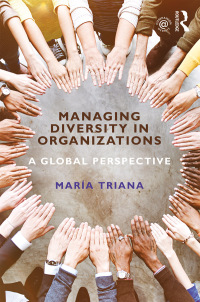Recognizing the need for age diversity in the workplace, several organizations are examining business practice and making
Question:
Recognizing the need for age diversity in the workplace, several organizations are examining business practice and making recommendations to make jobs more inclusive. The following recommendations are from ACAS
(2015a, 2015b) and Target Jobs (2015) in the United Kingdom.
• Avoid making references to age in the job description. Remove terms such as “recent graduate” which could discourage older applicants. Likewise, think carefully about the minimum work experience requirements. Asking for too many years of experience could unnecessarily remove young applicants who have the skills to do the job but have not had enough time to demonstrate those skills over a long period of time.
• Use images and recruiting campaigns that reflect a diverse group of people. Presenting only one type of demographic in an advertisement could give the impression that other groups are not welcome.
• Remove language that could be considered ageist in advertising and recruiting campaigns. For example, using the phrase “young and enthusiastic” discourages older applicants.
• Recruit from various sources that will provide a diverse applicant pool. This may include advertising and recruiting in various geographic locations and organizations that have a diverse pool of qualified candidates.
• Carefully consider the requirements listed in the job description.
Are all of the requirements listed necessary? If the requirements are too specific or too many, that will narrow the pool of candidates from which you can choose.
• Provide training to those involved in the decision-making process.
Those who are creating the short list of applicants and interviewing candidates should base their decisions on the knowledge, skills, and abilities of the candidates.
• Avoid asking interview questions related to age. For example, avoid asking people if they are comfortable working with older or younger persons, and avoid making comments about the suitability of the candidate’s fit for a certain job given his or her age.
The conversation should center around job requirements and the candidate’s ability to meet them.
• Accept equivalent qualifications. For instance, in fields where knowledge or technology changes over time, consider that graduates from different decades studied different courses and earned different credits. If candidates of different ages have comparable qualifications and can demonstrate they have the skills to do the current job, accepting those equivalent qualifications would ensure that some age groups are not excluded from consideration.
Discussion Questions:
1. The suggestions provided here seem straightforward. Yet many people perceive age discrimination, and many thousands of age discrimination lawsuits are filed every year. In what ways might it be easy for employers to implement the aforementioned guidelines? In what ways might it be difficult for employers to implement these guidelines?
2. In your own experience as a job applicant or as someone involved in the interviewing and selection process, have you witnessed age bias in the selection process? If so, how could it have been prevented?
3. Can you think of other suggestions for organizations to be more inclusive of all age groups?
Step by Step Answer:

Managing Diversity In Organizations A Global Perspective
ISBN: 9781138917026,9781317423676
1st Edition
Authors: Triana Maria





